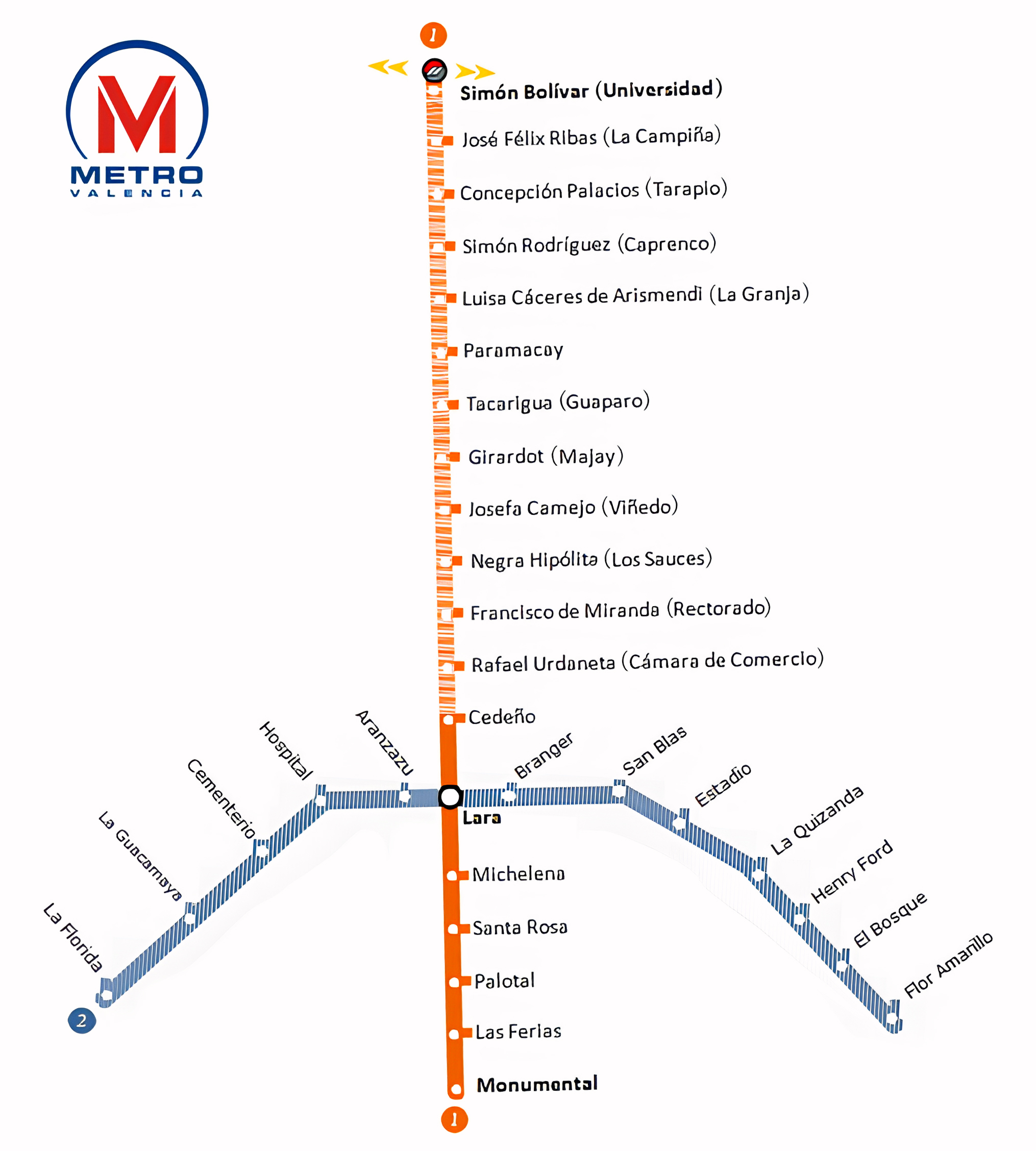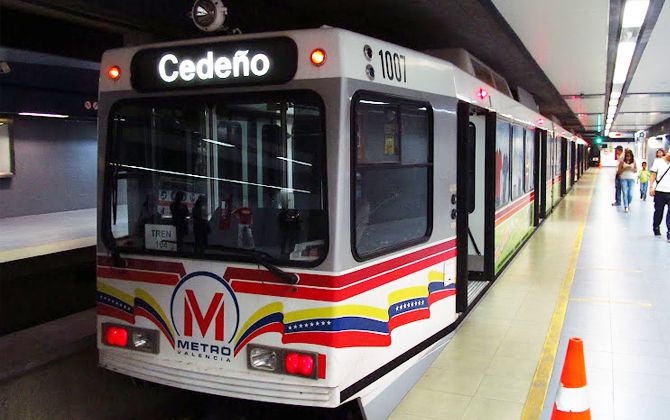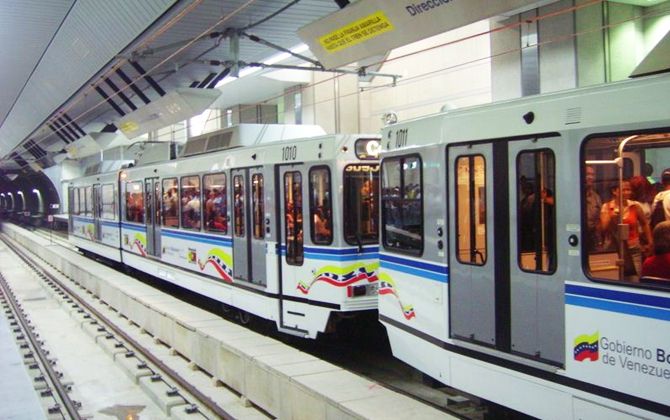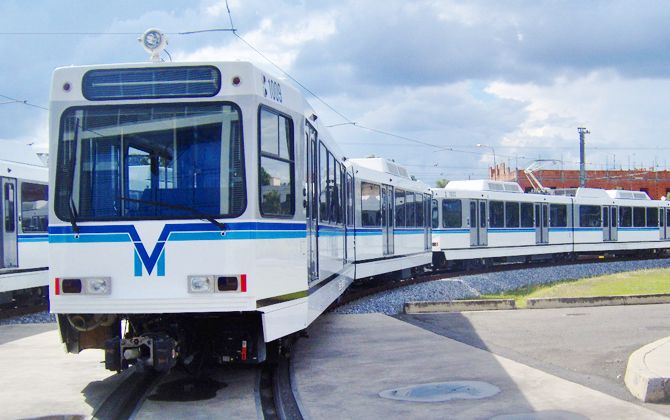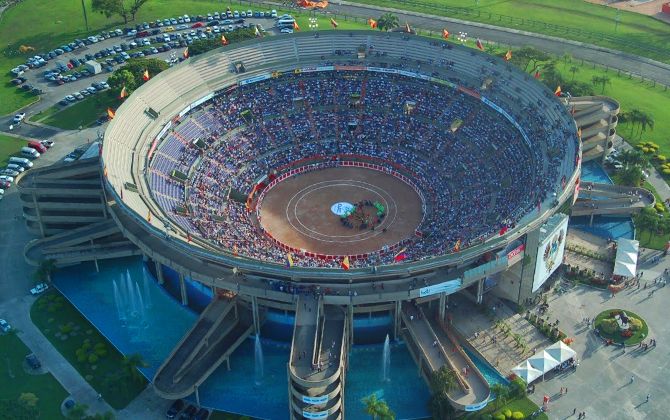The Valencia Metro (Metro de Valencia) is a rapid transit system serving Valencia, the capital of Carabobo state, Venezuela. It began operating between November 2006 and 2007 and is one of the country’s newest urban transport systems. Valencia is the third-largest city in Venezuela, and the metro has become an essential part of its public transport network.
As of 2026, the system has one fully operational line (Line 1) and a partial second line, with 9 stations in service. The metro offers fast, air-conditioned travel across the city’s central areas and carries tens of thousands of passengers daily. Since opening, it has transported more than 650 million riders, according to official data.
This 2026 guide covers everything about the Valencia Metro: the updated metro map, lines and stations, airport connections, operating hours, fares and tickets, transfers to other transport, rider tips, rules, history, nearby attractions, interesting facts, and upcoming expansion plans.
Metro Map of Valencia, Venezuela
The Valencia Metro network is still expanding. Line 1, the original north–south route, is fully displayed, along with the first section of Line 2.
The 2026 map provides a clear view of the current system, helping commuters and visitors move easily between major areas of Valencia.
Map of Valencia Metro showing different lines. Click on the map to enlarge it or download the Valencia metro map in PDF format.
Metro De Valencia Lines and Stations
Line 1 (Red Line)
Line 1 is fully operational with 7 stations, covering about 4.7 km (2.9 miles) from south to north. It starts at Monumental (Plaza de Toros Monumental) in the south and ends at Cedeño in the city center. The stations, from south to north, are: Monumental, Las Ferias, Palotal, Santa Rosa, Michelena, Lara, and Cedeño.
This line connects southern residential and industrial areas, including the bullring and Parque Recreacional Sur, with downtown Valencia. Monumental Station, next to the city’s bullring, features a distinctive design with a garden and fountain integrated into the Plaza de Toros complex.
Line 1 opened in stages: three stations (Monumental, Palotal, and Cedeño) were launched in late 2006 during a free trial, and the remaining stations opened by November 2007. Today, Line 1 is the backbone of the system, carrying most of the daily passengers.
Line 2 (Green Line)
Line 2 extends the north–south corridor beyond Cedeño toward northern Valencia and the suburbs. As of 2026, it has 2 operational stations and 4 more under construction. The open stations, Rafael Urdaneta and Francisco de Miranda, were inaugurated on April 29, 2015. They added 1.5 km (0.9 miles) of track, extending the network to 6.2 km (3.9 miles). A full trip from Monumental to Francisco de Miranda now takes about 18 minutes.
Francisco de Miranda Station, near the University of Carabobo’s Rectorado, serves around 30,000 additional riders per day. The four unfinished stations are Negra Hipólita (Los Sauces), Josefa Camejo (El Viñedo), Atanasio Girardot (Majay), and Tacarigua (Guaparo). These remain incomplete due to funding and construction delays. Once finished, Line 2 will include 6 stations over just above 4 km (2.5 miles), extending service into Naguanagua municipality. For now, Lines 1 and 2 operate as a continuous line, since Line 2 is essentially an extension of Line 1.
All Valencia Metro stations are underground, built in reinforced concrete, and feature two levels: a mezzanine with ticket counters and a platform level. Platforms are about 120 m (394 feet) long, designed for 2-car trains.
Amenities are basic. Escalators, elevators, and air-conditioning often do not work or are missing, so passengers should expect to use stairs and deal with warm conditions. Despite this, stations are generally safe and regularly patrolled.
Monumental Station stands out not only for its design but also because it houses the system’s maintenance depot and a large park-and-ride lot. At the other end, Cedeño Station offers easy access to Valencia’s historic center.
Metro De Valencia, Venezuela Timetable & Operating Hours
Operating Hours
The Valencia Metro runs every day of the week, but its schedule is limited. As of 2024–2026, trains operate Monday to Saturday from 6:00 AM to about 6:30 PM, and on Sundays and public holidays from 6:30 AM to 6:30 PM. The last departures are around 6:00–6:30 PM, much earlier than most metro systems. In the 2010s, service continued until 11:00 PM, but hours were reduced due to energy-saving measures and ridership levels. Always check the latest timetable before planning evening travel, as hours may change.
Frequency
Trains are less frequent than in larger metro systems. On weekdays during peak hours, they arrive about every 10 minutes. Off-peak, the interval increases to around 20 minutes. Because only part of the 12-train fleet is active, waits can be longer, especially later in the day. The full trip from Monumental (south) to Francisco de Miranda (north) is short, taking about 12–18 minutes in normal conditions.
Service Days
The metro runs Monday through Sunday, with no overnight service. It typically closes by early evening. On holidays, service follows the Sunday schedule (first train at ~6:30 AM, last at ~6:30 PM). Occasionally, service may be cut back for maintenance or power rationing. Updates are posted at stations and on official Metro de Valencia social media. Because the service window is limited, plan your return trip. If you stay out late, you’ll need a taxi or bus after the metro closes.
Valencia Metro Prices, Tickets and Cards
Fares
The Valencia Metro is one of the cheapest metro systems in the world. As of March 2024, a single ride costs Bs 10 (≈ $0.25–0.30). The fare is flat — you pay the same regardless of distance. Students pay a discounted fare of Bs 5 (≈ $0.14). Children under 4, seniors, and people with disabilities ride free with valid ID. These discounts follow national policy to support low-income and vulnerable groups.
Tickets
Tickets are paper-based or tokens, sold at station booths. Only cash in Venezuelan bolívares (VES) is accepted. Carry small bills or coins, as change is often limited. No unlimited ride passes or multi-day tourist cards are available — you must buy a new ticket for each trip. Ticket gates are at station entrances, where you insert your ticket or tap a card to enter.
SUVE Smartcard
A new contactless payment system, SUVE (Sistema Único de Viaje Electrónico), is being rolled out nationwide. In Valencia, SUVE cards were introduced in 2023–2024. The blue “Turpial” card is for students (cost Bs 30 to obtain, then applies half-fare automatically). The yellow “Orquídea” card is for the general public. SUVE cards can be purchased at major stations when available. For regular users, the card is convenient. For visitors, cash tickets are usually simpler.
At about $0.30 per ride, the metro is heavily subsidized and the most affordable way to travel in Valencia. Bring bolívares in small denominations for tickets, and if you qualify for a discount or exemption, carry your ID. Credit cards and foreign currency are not accepted at ticket booths.
Connections
Although small, the Valencia Metro connects with other transport options, improving citywide mobility. Many stations have nearby bus stops. The regional transit authority operates TransCarabobo, a feeder bus network. When the two Line 2 stations opened in 2015, new feeder routes were added. For example, the Guacara–Valencia bus now stops at Francisco de Miranda station, as does the Florida–Puente Bárbula line. These links extend the metro’s reach to suburbs like Naguanagua, San Diego, and Guacara.
Within Valencia, local bus lines and private microbuses run along main avenues that intersect with metro stations. Monumental station connects directly to a large bus terminal serving local and intercity routes. Cedeño station, in the downtown core, is also a major transfer point, with many bus lines passing nearby. Santa Rosa and Las Ferias stations are close to busy intersections where buses and shared taxis (por puestos) are easy to find.
The city’s main long-distance bus terminal, Big Low Center, is southeast of Valencia and not directly on the metro. To reach it, most riders take the metro to Santa Rosa or Palotal, then continue by taxi or bus. Future metro plans aim to connect Big Low Center directly, but for now, this is a weak spot in the network.
A major future connection is planned with Venezuela’s Central Regional Train (Ferrocarril Centro), which will link Caracas, Maracay, and Puerto Cabello. One of the train stations will be near Naguanagua and the University of Carabobo. Valencia’s future Line 3 is set to end at Simón Bolívar Station in Naguanagua, designed as an interchange with this railway. This “Metro-Tren” link would allow direct transfers between the metro and inter-city trains. As of 2026, neither the railway nor Line 3 is open, but the project is central to Valencia’s long-term transport strategy.
Taxis and rideshares also complement the metro. Many passengers take a short ride from home to a station to avoid long bus commutes. Monumental Station offers a large parking area, making it useful for park-and-ride trips from the south. There is no formal bike-share or secure bike parking at stations, though informal spots may exist. Cycling in Valencia is generally challenging.
Think of the Valencia Metro as the backbone of the city’s transport system. It works best when combined with buses or taxis for areas beyond its narrow corridor. Look for TransCarabobo buses at Francisco de Miranda and Monumental stations, and watch for the planned future rail link at Simón Bolívar.
Access to the Airport
Arturo Michelena International Airport (VLN) is on the eastern edge of Valencia. The metro does not serve the airport directly. The closest operational station is Las Ferias, but it is still several kilometers away. Future expansions may bring a station to San Diego or Flor Amarillo, near the airport, but as of 2026 this is only a plan.
Currently, the airport is about 10–12 km (6–7 miles) east of central Valencia, a 15–20 minute drive in normal traffic. To reach the metro from the airport, travelers use taxis, shuttles, or buses. A common option is to take a taxi or rideshare from the airport to Las Ferias or Palotal stations, then transfer to the metro.
For now, all airport trips require a road connection. Keep future expansion plans in mind, as a metro line to Flor Amarillo could eventually provide direct airport access.
Tips and Rules for Using the Valencia Metro
- Cash Only. Tickets are purchased with bolívares in cash – cards are not accepted. Carry small bills and exact change whenever possible, as ticket booths often cannot break large denominations. Buses also require cash fare.
- Fare Must Be Paid. All passengers 5 years and older must have a valid ticket. Children under 5 ride free with an adult.
- Operating Hours and Trip Planning. Mind the Schedule: The metro usually stops running by early evening (around 6:30 PM). Plan return trips accordingly; otherwise, you’ll need to use a taxi or bus.
- Safety and Security. Travel in Daytime: While generally safe in busy areas, some neighborhoods can feel risky at night. Try to ride during daylight hours, ideally with a companion.
- Personal Safety. Stay behind the yellow platform line until the train stops. When riding, sit or hold handrails to avoid falls if the train brakes suddenly.
- Behavior and Courtesy. Priority Seating: Seats near the doors are reserved for the elderly, disabled, or pregnant passengers. Offer your seat when needed. Elevators, where available, should be left for those with mobility needs.
- Items and Luggage. Strollers and Large Bags: Fold strollers before entering trains or escalators. Avoid blocking aisles with luggage. Large or hazardous items (flammables, corrosives, explosives) are strictly forbidden.
- Pets. Only service animals (guide dogs, police dogs) are allowed. Regular pets, even in carriers, are not permitted.
- Comfort and Patience. Trains may be delayed due to aging equipment; waits of 10–20 minutes are not unusual, so remain patient and listen for announcements.
History
The idea of a metro in Valencia dates back to the 1970s, when feasibility studies were carried out. The operating company, C.A. Metro de Valencia, was officially founded on August 12, 1991. Work started in 1994 but soon stalled due to lack of funds. Progress resumed in the late 1990s, when contracts were awarded to international firms such as Ghella (Italy) and Siemens AG. In 2000, the Venezuelan government under President Hugo Chávez became the majority owner, providing new investment.
A tunnel boring machine (TBM) called “Topa Beatriz,” purchased in 2002, was used to dig much of the system. Interestingly, the same TBM had previously been used for tunnels under the Saint Clair River in Canada. With this equipment, crews completed the tunnels for Line 1.
After years of delays, the first 4.3 km (2.7 miles) of Line 1 opened in a trial phase on November 18, 2006, with free rides and limited hours. Exactly one year later, on November 18, 2007, full commercial service began with all 7 stations open. Line 1 construction (1997–2006) cost about $782.7 million USD, financed by Venezuelan funds and international loans, including a Chinese-Venezuelan fund. The first fare in 2007 was Bs 0.50 (old currency), extremely cheap even at the time.
By 2011, daily ridership reached around 60,000. Expansion plans quickly followed. Construction of Line 2 began in 2007 but was plagued by suspensions and slow progress. Despite targets for completion in 2012, delays persisted due to funding shortages and the national economic crisis. On April 29, 2015, President Nicolás Maduro inaugurated the first phase of Line 2. Two stations — Rafael Urdaneta and Francisco de Miranda — opened to the public, though they were only about 60% complete at the time. Even so, ridership rose sharply, from about 64,000 to 95,000 daily passengers.
The four remaining Line 2 stations — Negra Hipólita, Josefa Camejo, Girardot, and Tacarigua — remain unfinished as of 2026. Some are only partial structures, and the TBM “Beatriz” still sits in an incomplete tunnel as a relic. Authorities have carried out maintenance to prevent deterioration, but progress depends on future funding.
Over time, the system faced aging equipment and shortages of spare parts. By the late 2010s, broken escalators and limited train availability became common. A magnitude 4.9 earthquake in December 2018 temporarily suspended service, though operations resumed after inspections. By 2023, only a few trains were fully functional, with some platforms only partly served due to reduced train length.
Despite these problems, the metro has operated continuously since 2007. In August 2026, it marked 34 years since the founding of the company and 18 years of passenger service. By then, it had carried more than 650 million riders. Management described it as a “rapid, safe, and reliable” system and emphasized efforts to modernize, including the new SUVE smartcard system.
The Valencia Metro’s history shows both persistence and setbacks. It has taken decades to build, with progress slowed by economic realities, yet it has transformed commuting for thousands in Valencia.
Timeline
- 1991: Metro company established
- 1994: Initial construction started, then halted
- 1998–2004: Major construction phase, introduction of TBM technology
- 2006: First segment of Line 1 opened (trial service)
- 2007: Full Line 1 opened for commercial service
- 2015: First two stations of Line 2 inaugurated
- 2015–2026: Delays on Line 2, focus on maintaining existing system
- 2026: Metro celebrates 18 years of service, over 650 million passengers carried
Nearby Attractions
The Valencia Metro gives access, or at least proximity, to several landmarks and attractions:
Plaza de Toros Monumental: One of the world’s largest bullrings, right next to Monumental Station. The nearby Parque Recreacional Sur is also a popular outdoor spot.
Parque Negra Hipólita: Large park by the Cabriales River, near Cedeño Station. About 3 km (1.9 mi) east of the station – a short taxi ride or a 30–40 minute walk.
Casa de los Celis & Casa Páez: Colonial houses turned museums, about 690 m from Lara Station. Both are within a 5–10 minute walk of the old city center.
Ateneo de Valencia: Cultural venue and theater just 400 m (0.25 mi) from Cedeño Station. Nearby are Plaza Bolívar and Valencia Cathedral.
Shopping: Fundación Mendoza Mall is about 800–900 m from Las Ferias Station. Other malls, like Metropolis or Galas Plaza, are best reached by car or short taxi rides.
University of Carabobo: Accessible via Francisco de Miranda Station, then a short taxi or bus ride. A future metro station will connect directly to the campus.
Valencia Aquarium & Zoo: Located in San José. Best reached by taxi from central Valencia or from Rafael Urdaneta/Cedeño stations (4–5 km away).
Cerro Casupo: A hill and park with panoramic city views, reached by car or taxi, west of the city.
Most downtown sights are near Cedeño and Lara stations, while Monumental connects to the southern recreational area. For attractions farther away, combine metro with a taxi or bus.
Fun Facts
- International ties: Construction involved Spanish, Chinese, and other foreign partners. Siemens supplied trains and systems.
- Monumental Station: Designed with gardens and a fountain to match the adjacent bullring. Originally named Plaza de Toros.
- “Beatriz” TBM: The tunnel boring machine used was previously deployed under the St. Clair River between Canada and the USA.
- Ridership: Daily use rose from ~60,000 in 2011 to ~95,000 after Line 2 opened. By 2026, the metro had carried over 650 million passengers.
- Trains: Siemens SD-460 light rail vehicles, 2-car sets holding about 500 passengers. Same model is used in St. Louis (USA) and Guadalajara (Mexico).
- Specs: Standard gauge (1,435 mm), about 6.2 km (3.9 mi) currently in service. Designed with modern signaling and overhead wire power.
- Station names: Many honor national heroes (e.g., Francisco de Miranda), though locals often use neighborhood-based names.
- Trial period: From 2006–2007, the metro ran free for a full year to encourage ridership.
- Impact: Metro stations spurred new commerce, especially near Monumental and in the historic downtown, boosting property values and foot traffic.
Future Expansions
The Valencia Metro has ambitious plans. The system is envisioned to grow into four lines with about 30 stations.
Line 2 Completion. The main priority is finishing Line 2. Four stations — Negra Hipólita, Josefa Camejo, Girardot, and Tacarigua — remain under construction. Once complete, Line 2 will extend service north into Naguanagua, adding about 4.3 km (2.7 mi) and bringing the full north–south corridor (Lines 1+2) to 9 km (5.6 mi). Structures are mostly built, but funding delays have stalled progress. Officials suggest stations may open one by one if resources allow.
Line 3 (Naguanagua Line). Line 3 will serve the northwestern metro area, running about 5.6 km (3.5 mi) through Naguanagua. Proposed stations include Paramacay, La Granja, Simón Rodríguez, Concepción Palacios, José Félix Ribas, and Simón Bolívar. The Simón Bolívar terminus, near the University of Carabobo, will connect with the national railway. Line 3 is still in the planning stage, with studies underway but no construction yet.
Line 4 (East-West Line). Line 4 is a longer-term project covering the east-west axis. It would span 18.3 km (11.4 mi) with 11 stations, linking La Florida (northwest) with Flor Amarillo (east, near the airport). The line would pass central Valencia, connect with Lines 1/2 at Lara, and serve San Diego, La Isabelica, and the Big Low Center bus terminal. If built, it could finally provide airport access. At present, Line 4 exists only on paper.
Reconfiguration and Other Plans. Early designs grouped the metro as two intersecting lines (A and B), rather than four. In practice, Lines 1–3 form one long north-south corridor, while Line 4 will be the crosstown route. Future changes may adjust numbering and strategy. Other ideas, such as a spur to Puerto Cabello, remain speculative. Upgrading existing trains and infrastructure is also considered part of expansion.
In short, the vision is a citywide network with:
- A continuous north-south corridor from Monumental to Naguanagua
- An east-west line connecting suburbs and the airport
- Integration with Venezuela’s national railway.
